
The Goat Island marine reserve at Leigh, more properly known as the Cape Rodney to Okakari Point Marine Reserve, was New Zealand's first fully protected marine reserve, created in 1974. The reserve is adjacent to the University of Auckland's Leigh Marine Laboratory. The marine reserve is a very popular destination for swimmers, snorkellers and divers, who come to see the abundant fish life. In 2007, for example, 375,000 people visited the reserve. Photo: RNZ / Alison Ballance
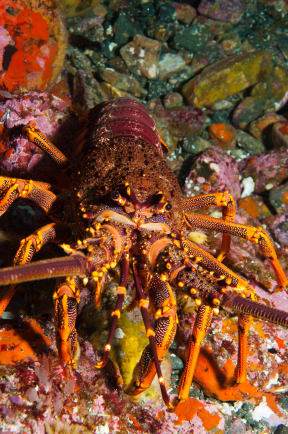
Crayfish within no-take marine reserves are significantly larger and more abundant than those living in unprotected areas. They have a significant ecological role in controlling sea urchin numbers, for example. Photo: Malcolm Francis
“We hear a great deal in the media about the ‘rights’ of fishermen, but the ‘rights’ of others are rarely mentioned. What should we think about the ‘right’ of children to see for themselves the full display of marine life. Is it sufficient that they should just see what the fishermen did not want or could not catch? I personally consider that it is a basic human right of all children to experience the rich range of natural life, and that we should make real efforts to arrange this. We already do on land. We keep representative pieces of forest and other habitats primarily for education, regardless of their economic value. I think we should do the same in the sea.”
Bill Ballantine, the ‘father of marine reserves’, writing in ‘Fifty years on: Lessons from marine reserves in New Zealand and principles for a worldwide network’
Proposed new legislation for marine protected areas is ambitious in its scope, but lacking in several key areas, according to critics.
Conservationists and commercial fishers alike have suggested that recreational fishing parks would be better managed under fisheries legislation, rather than under marine protected area legislation, while the omission of the Exclusive Economic Zone or EEZ is widely seen as a significant shortcoming.
On the other hand, tools to allow the creation of a robust network of no-take marine reserves get the tick of approval, and as do broadening the scope of seabed reserves and species-specific sanctuaries.
The proposed legislation has two main purposes, protecting biodiversity and growing the ‘blue economy’, but has the proposal found the right balance between protection versus economic growth? All new marine protected area proposals would include an analysis of the economic potential of an area, but there as yet there is no clear definition of what a marine protected area is, nor is there any mention of key concepts such as ecosystem services.
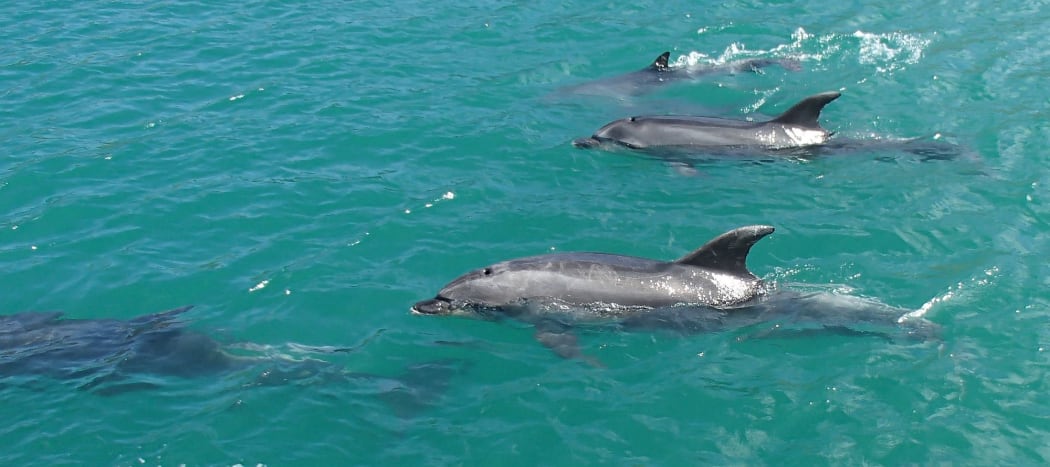
Species specific sanctuaries are one of four different kinds of marine protected areas that the proposed new legislation will include. There are currently four marine mammal sanctuaries, including for Hector's and Maui's dolphins and New Zealand sea lions, but the wider sanctuary proposal will allow sanctuaries for species such as great white sharks, albatrosses and penguins. Photo: RNZ / Alison Ballance
Marine protected area proposal
New Zealand is a small country surrounded by a vast ocean territory. It has the fourth largest Exclusive Economic Zone, or EEZ, in the world, and Environment Minister Nick Smith say his ambition is for this country to be a “world leader in the sustainable management and protection of our ocean estate.”
This is the purpose of proposed new legislation on marine protected areas, which is currently open for public consultation (submissions close on 11 March 2016).
The proposal includes four types of marine protection:
- Marine reserves
- Species-specific sanctuaries
- Seabed reserves
- Recreational fishing parks
Raewyn Peart, policy director, Environmental Defence Society, and author of ‘Sustainable seas – managing the marine environment’ says the existing proposal needs “better strategic planning up-front … that would set out much more clearly what we’re trying to achieve and how we’re going to achieve it, and some good solid conservation planning information.”
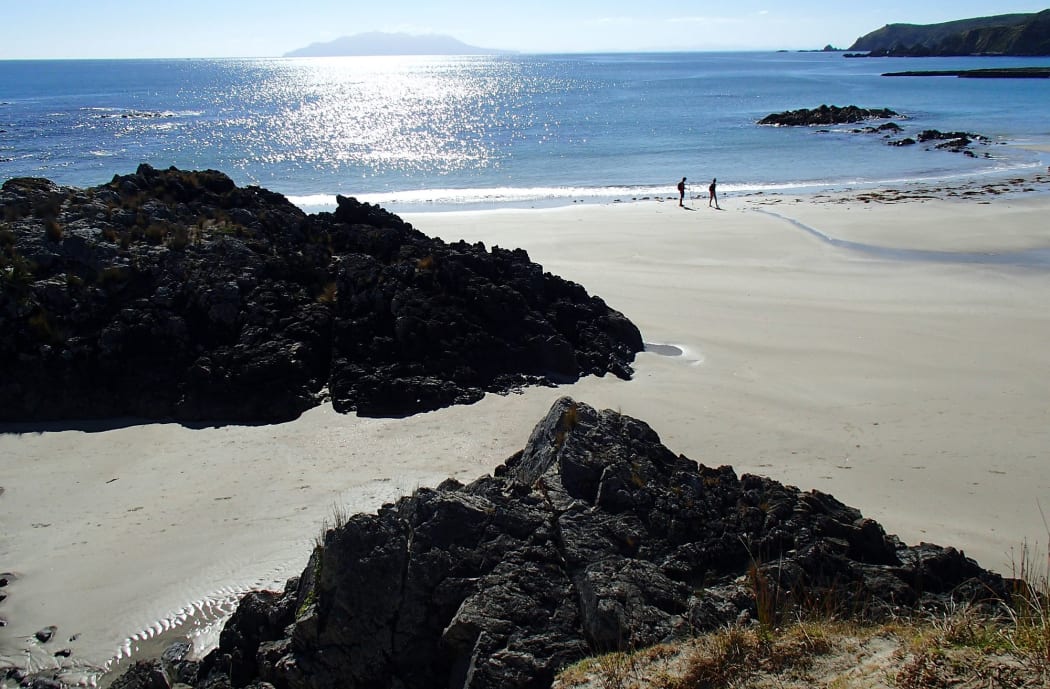
View across Tawharanui Marine Reserve and the Hauraki Gulf towards Hauturu/Little Barrier Island. Tawharanui is a fully protected marine reserve, and marine life within the reserve is much more bountiful than in the surrounding waters where fishing is allowed. New Zealand has 44 marine reserves. Photo: RNZ / Alison Ballance
Marine reserves
Marine reserves will continue to be no-take reserves, for protecting biodiversity in its natural state. New Zealand currently has 44 marine reserves.
“We are going to have an improved process for creating marine reserves in the future.”
“The government’s long term objective,” says Nick Smith “is to have a network of marine reserves that matches up with the diversity of different ocean habitats around New Zealand’s huge EEZ and territorial sea.”
The new legislation will replace the existing Marine Reserves Act, which was ground-breaking when it was created in 1971, but is limited in scope, as fully protected marine reserves can only be created for the purpose of scientific study.
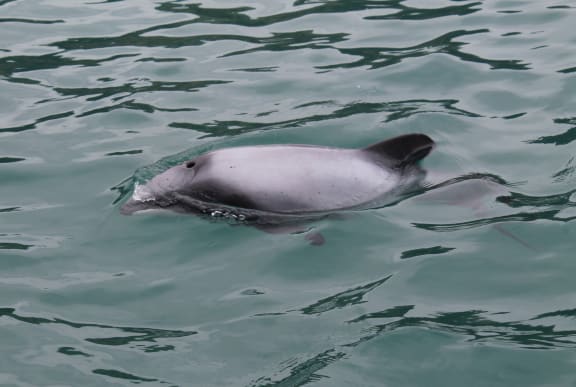
A species specific sanctuary for Hector's dolphins already exists in Akaroa Harbour. Photo: RNZ / Alison Ballance
Species-specific sanctuaries and seabed reserves
The proposal will broaden species-specific protection from marine mammals to all kinds of marine life, such as sharks, albatrosses and penguins. Species-specific sanctuaries are currently created under the Marine Mammal Protection Act and the Wildlife Act.
Seabed reserves will build on existing benthic protected areas, which prohibit some fishing methods such as dredging and trawling which can damage seafloor communities. This might include the protection of key seabed habitats such as deep sea corals, horse mussel beds and bryozoan beds, protecting them from mineral exploitation as well as fishing.
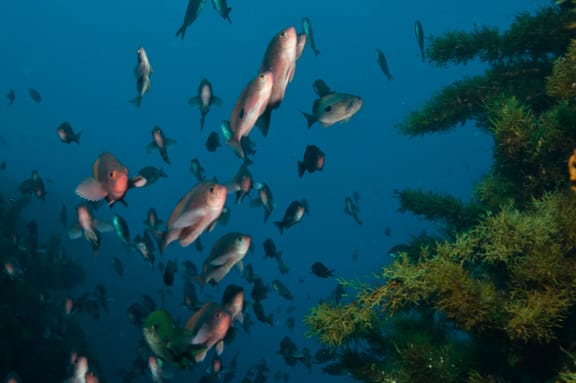
Butterfly perch at the Three Kings Islands. Photo: Malcolm Francis
Recreational fishing parks
The proposal for recreational fishing areas in the Hauraki Gulf and Marlborough Sounds was an election promise by the National Party. These will see most kinds of commercial fishing banned from the inner Hauraki Gulf and the Marlborough Sounds.
Nick Smith sees the value of these parks as being a bargaining tool with the recreational fishing lobby who have traditionally opposed most marine reserve proposals – he is hoping that the offer a local fishing park can be used to offset resistance to the creation of no-take reserves. He also hopes it will make recreational fishers take more responsibility for the sustainable management of fish stocks.
The Exclusive Economic Zone
Another National Party election promise, to include the EEZ in the proposed marine protected area legislation, has not been fulfilled, as the proposal covers only territorial seas and not the EEZ.
“The biggest weakness of the proposal is that it won’t apply to 95% of our marine area, and that’s our Exclusive Economic Zone. And I think that’s a major gap … that will make it really difficult to meet our international obligations.” Raewyn Peart.
This means the proposed Kermadec Ocean Sanctuary, which covers a large area around the Kermadec Islands out to the edge of the EEZ, will not covered by this new legislation and will require its own piece of legislation.
Useful links
Public submissions on the proposed marine protected area legislation close on 11 March 2016.
Forest and Bird, ECO, the Environmental Defence Society and WWF (NZ) have all commented publicly on the proposal.

